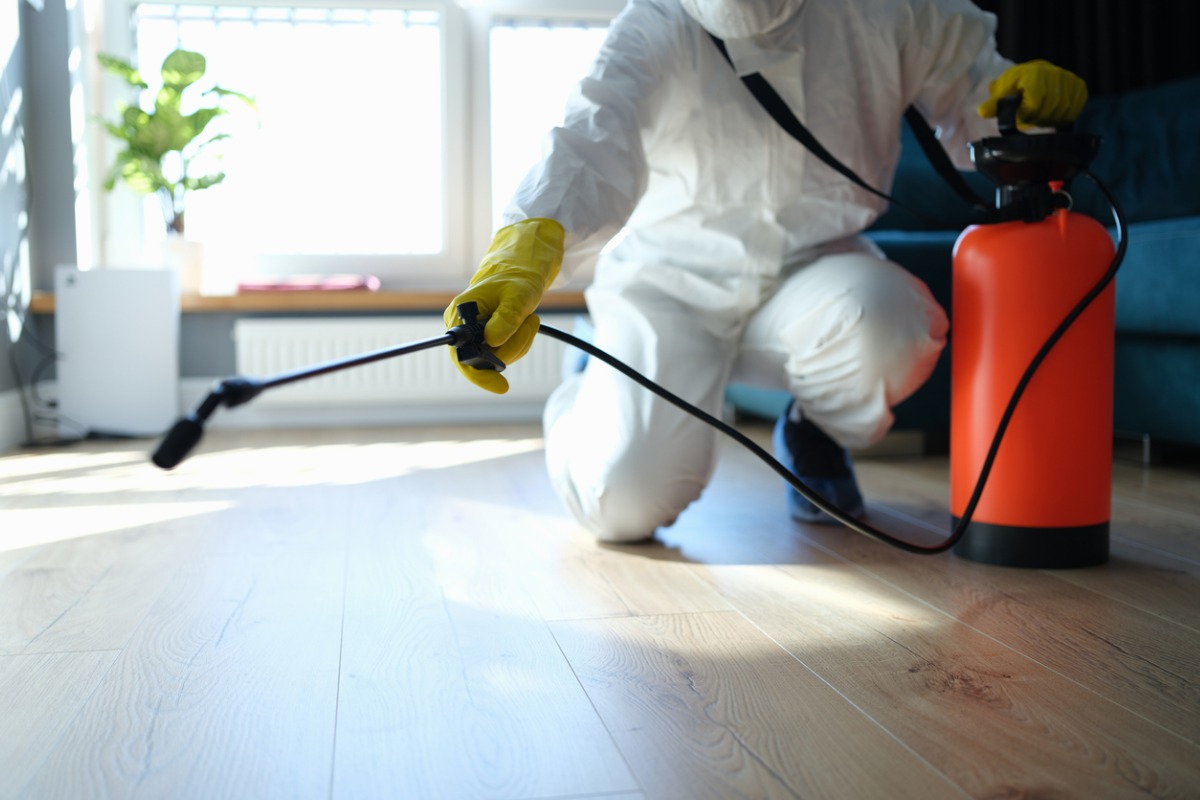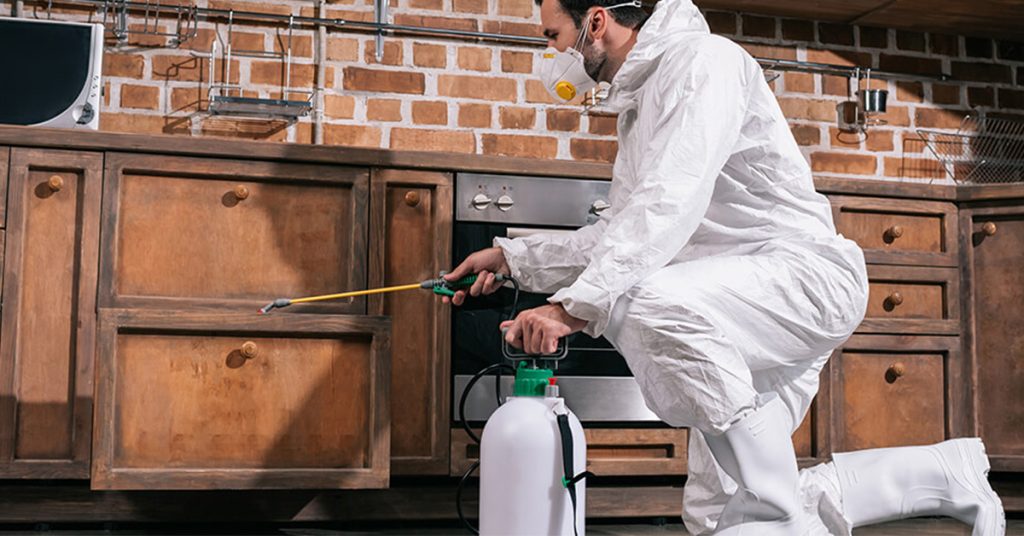Trust Pest Control Lockhart for Long-Lasting Pest Prevention
Trust Pest Control Lockhart for Long-Lasting Pest Prevention
Blog Article
Checking Out Problem and Treatment Strategies on the planet of Insect Control
The landscape of parasite control includes a myriad of difficulties, particularly as problems of typical home insects proceed to develop. By integrating preventative procedures with advanced administration methods, such as Integrated Insect Administration (IPM), homeowners can much better secure their environments.

Typical Home Vermin
When it comes to managing our space, recognizing typical house bugs is essential. These bugs not just interrupt our convenience but can additionally present health and wellness threats and damages residential property. One of the most widespread house insects include ants, cockroaches, rodents, termites, and bed insects.
Ants, commonly seen foraging in cooking areas, can infect food and establish huge nests. Cockroaches, understood for their durability, can trigger allergies and spread pathogens. Rodents, consisting of computer mice and rats, can create structural damages and bring diseases like hantavirus and salmonella. Termites, typically described as "silent destroyers," can compromise the integrity of wooden frameworks, leading to expensive repairs. Bed pests, although not illness providers, can cause considerable pain via their bites and bring about psychological distress.
Acknowledging the indications of these pests, such as droppings, nests, or attack marks, is crucial for early intervention (Pest Control Lockhart). Correct cleanliness techniques, securing entry points, and preserving a clutter-free setting are reliable preventative measures. By identifying these typical house pests and recognizing their actions, house owners can take positive steps to reduce invasions, making certain a healthier living atmosphere
Recognizing Parasite Infestations
Bug invasions can escalate promptly, turning a minor annoyance right into a substantial problem if not addressed promptly. Comprehending the nature of these problems is critical for reliable administration. Bugs can invade property and commercial rooms for various factors, including the look for food, sanctuary, or breeding premises. Usual factors adding to invasions consist of poor cleanliness, architectural susceptabilities, and seasonal changes that drive insects inside your home.
Determining the sort of parasite is important, as various varieties exhibit varied behaviors and reproductive rates. As an example, rodents may establish nests in surprise areas while insects like roaches prosper in wet atmospheres. Early detection commonly pivots on acknowledging indicators such as droppings, chomp marks, or unusual noises, which can suggest a problem before it comes to be severe.
Environmental conditions additionally play an essential duty in bug spreading. Cozy, damp environments can help with the quick growth of pest populations, while adjustments in landscaping or building and construction can unintentionally produce favorable settings. Regular assessments and preventative measures are paramount to reducing the threat of invasions. An informed strategy to recognizing these dynamics lays the foundation for reliable bug administration techniques in the future.
Treatment Methods and Strategies
Effective therapy methods and strategies are essential for mitigating pest invasions and recovering a secure atmosphere. A multifaceted technique is frequently best, integrating chemical, organic, and link mechanical techniques tailored to the details insect and the extent of the infestation.
Chemical therapies include the usage of insecticides and herbicides, which can properly get rid of insects. However, appropriate application and adherence to security guidelines are essential to minimize threats to humans and non-target microorganisms. Integrated Pest Administration (IPM) urges the judicious use chemicals as a last hope, counting rather on surveillance and threshold levels to identify treatment requirements.
Biological control techniques include presenting all-natural killers or bloodsuckers to decrease pest populations. This strategy is progressively preferred, particularly in farming settings, as it advertises ecological find more sustainability.
Mechanical techniques, such as catches and obstacles, offer instant alleviation from parasites without presenting chemicals. Choices include sticky catches for bugs or physical barriers for rats.
Ultimately, the choice of therapy approach must consider the details insect, the environment, and potential effect on human health and wellness and ecosystems. A well balanced combination of these strategies can successfully manage invasions while promoting lasting pest control services.
Preventative Measures for Homes
Proactively attending to pest problems before they rise is essential for preserving a healthy and balanced home environment (Pest Control Lockhart). Implementing efficient preventive procedures can substantially decrease the possibility of invasions, inevitably protecting both your building and well-being

Correct landscape design additionally plays an important role in prevention. Keeping shrubs and trees cut away from the residence reduces the possibilities of pests finding their way inside. Furthermore, guarantee that drainage systems are working effectively to avoid standing water, which can reel in mosquitoes and other pests.
Lastly, regular assessments are suggested. On a regular basis inspecting for signs of pest task allows for very early intervention. By embracing these preventative steps, homeowners can create a setting that is less welcoming to insects, consequently improving their total lifestyle and reducing the requirement for comprehensive insect control interventions.
Commercial Parasite Control Strategies
A comprehensive approach to commercial parasite control is important for organizations intending site link to maintain a safe and sanitary atmosphere. Reliable strategies include a mix of regular inspections, staff member training, and the application of Integrated Parasite Monitoring (IPM) practices.
Normal assessments enable very early discovery of parasite activity, enabling for prompt treatment. Services ought to create a routine schedule for these assessments, focusing on high-risk areas such as cooking areas, storeroom, and waste disposal websites. Worker training is just as critical; team must be enlightened on the signs of insect invasions and the relevance of reporting them right away.
Executing IPM practices helps reduce parasite concerns sustainably. This includes habitat alteration, such as sealing access factors and lowering mess, as well as employing natural deterrents before considering chemical therapies.

Furthermore, collaborating with a qualified pest control copyright ensures access to expert expertise and sophisticated treatment options. This partnership can bring about tailored insect control prepares tailored to the certain demands of business, reducing risks and boosting overall efficacy. Ultimately, a positive and educated approach cultivates a pest-free atmosphere, securing both public health and wellness and service online reputation.
Verdict
In final thought, efficient insect control necessitates an extensive understanding of common family parasites and their actions, paired with targeted therapy methods. Executing precautionary steps alongside therapy approaches such as Integrated Pest Management and biological control boosts the ability to alleviate infestations.
Report this page